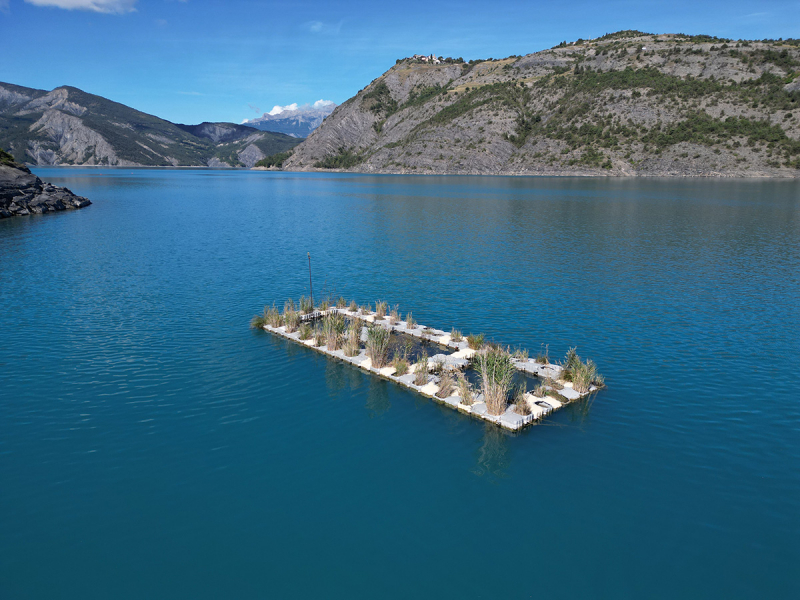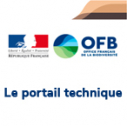Floating structures to support biodiversity in degraded lakeshores
As part of the UROS project, the ECLA "Ecosystèmes Lacustres" cluster has joined forces with the ECOCEAN company to design innovative devices to promote biodiversity in lake ecosystems. After 5 years of testing in real-life conditions, the initial results are encouraging.
Lake ecosystems are home to a wide variety of habitats, rich in biodiversity and providing numerous ecosystem services. In particular, the water resources they represent are the source of numerous human uses. Many natural lakes have been artificialized and a multitude of reservoirs created. Today, 79% of French lakes over 50 hectares in size are man-made.
The exploitation of water resources, whether for hydroelectricity, irrigation or drinking water, can lead to a strong amplification of water level variations, which severely degrades habitats in the littoral zone of these environments.
These artificial fluctuations have a major impact on all aquatic biodiversity, particularly on fish through the loss of their breeding and nursery habitats, or through the direct destruction of spawning grounds by drying up.
Limiting damage to biodiversity
Faced with this situation, technical solutions are being sought by scientists and managers, in conjunction with ecological engineering companies. Among these solutions, the use of floating artificial islands seems to be one of the most effective, when action to regulate water levels is impossible. By following water level variations, the functional habitats offered by floating structures are constantly accessible to aquatic biodiversity, as could be those present in the littoral zone of natural lakes.
In this context, the UROS project is particularly innovative. It brings together the skills and experience of ECOCEAN in the marine environment and the ECLA "Lacustrine Ecosystems" cluster (OFB-INRAE-USMB) to design, build and test the effectiveness of floating vegetated islands mimicking a true littoral zone to support aquatic macrofauna.
To test the effectiveness of the structures, the project team chose to select a reservoir with highly fluctuating water levels to technically test the system under extreme conditions. The choice fell on the Serre-Ponçon reservoir in the Hautes-Alpes region, which has an average annual tidal range of around 30 meters. As a result, three floating artificial littoral zones of 70m² each were installed in September 2018 on the reservoir with the help of local managers.
Encouraging results
After 5 years of monitoring (2018-2023), results are encouraging in terms of the ecological effectiveness of floating structures in supporting aquatic and terrestrial biodiversity. The latest results were recently presented at the scientific and technical seminar on ecological restoration in lake environments, held in Lyon on October 3-4, 2023.
In the terrestrial vegetation of the artificial islands, over 40 eggs were laid by 3 different bird species (mallard, grey wagtail, herring gull). Juveniles and adults of the common toad (Bufo bufo) were observed on the terrestrial part, while eggs were laid in the roots of the helophytes.
In the submerged sections, the results showed a very rapid and increasing colonization of macroinvertebrates, both in terms of abundance and number of species.
As for fish, several species and several thousand individuals were counted, the vast majority of them juveniles. The extensive seagrass beds played their role as refuge-nursery habitats for the young stages, particularly for the emblematic pike.




